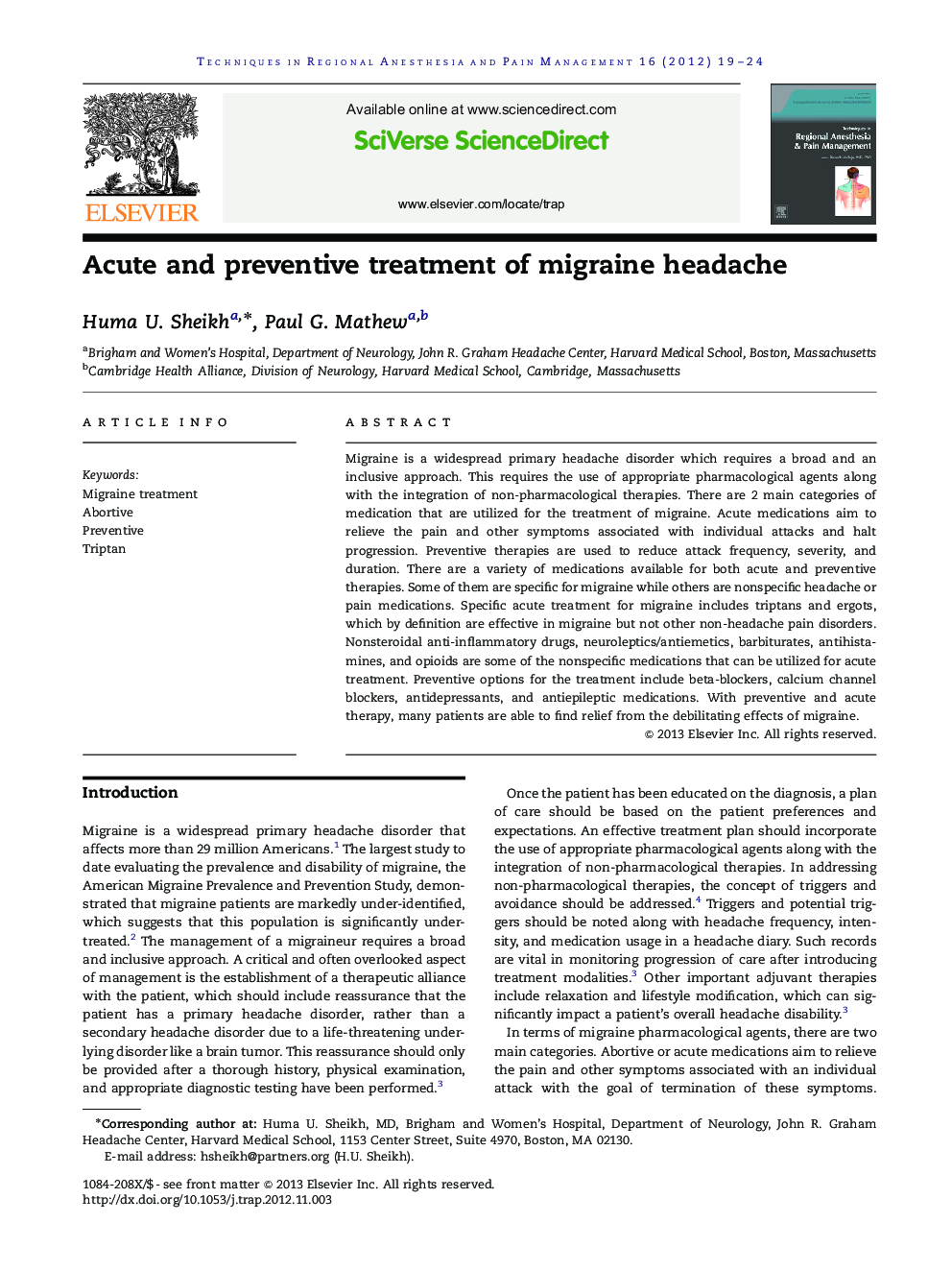| Article ID | Journal | Published Year | Pages | File Type |
|---|---|---|---|---|
| 2772122 | Techniques in Regional Anesthesia and Pain Management | 2012 | 6 Pages |
Migraine is a widespread primary headache disorder which requires a broad and an inclusive approach. This requires the use of appropriate pharmacological agents along with the integration of non-pharmacological therapies. There are 2 main categories of medication that are utilized for the treatment of migraine. Acute medications aim to relieve the pain and other symptoms associated with individual attacks and halt progression. Preventive therapies are used to reduce attack frequency, severity, and duration. There are a variety of medications available for both acute and preventive therapies. Some of them are specific for migraine while others are nonspecific headache or pain medications. Specific acute treatment for migraine includes triptans and ergots, which by definition are effective in migraine but not other non-headache pain disorders. Nonsteroidal anti-inflammatory drugs, neuroleptics/antiemetics, barbiturates, antihistamines, and opioids are some of the nonspecific medications that can be utilized for acute treatment. Preventive options for the treatment include beta-blockers, calcium channel blockers, antidepressants, and antiepileptic medications. With preventive and acute therapy, many patients are able to find relief from the debilitating effects of migraine.
